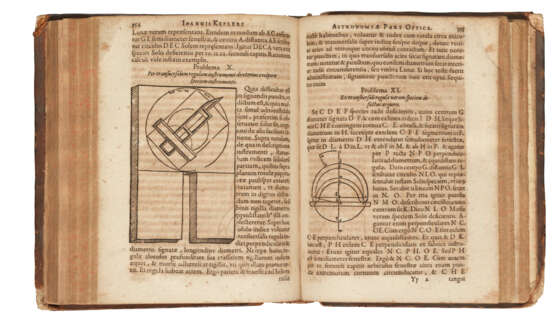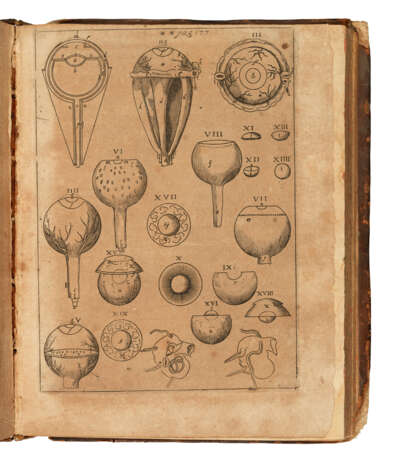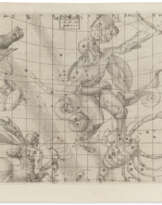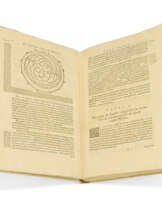ID 870725
Lot 131 | KEPLER, Johannes (1571-1630)
Estimate value
£ 3 000 – 5 000
Ad vitellionem paralipomena, quibus astronomiae pars optica traditur... de modo visionis, & humorum oculi usu, contra opticos & anatomicos. Frankfurt: C. Marnius & Heirs of J. Aubrius, 1604.
First edition of Kepler's first important optical work and a highly significant book in the history of ophthalmology. Kepler was responsible for introducing the terms 'prism,' 'lens,' 'meniscus,' and many others into the field of optics. The first part deals with human vision and the functions of the eye, the crucial role played by the retina, the process of refraction and the first scientifically correct explanation of myopia. The second part is divided into six sections, which 'include not only a discussion of parallax, astronomical refraction, and his eclipse instruments but also the annual variation in the apparent size of the sun. Since the changing size of the solar image is inversely proportional to the sun's distance, this key problem was closely related to his planetary theory; unfortunately, his observational results were not decisive' (DSB). Caspar 18; Cinti 13; Garrison p. 260; Hirschberg 308; Krivatsy 6343; Zinner 3993.
Quarto (196 x 150mm). Woodcut device on title, one engraved plate showing various anatomical sections of the eye, numerous woodcut diagrams in the text, 2 of which full-page, and two folding printed tables (staining and browning throughout, extremely heavy to about two-thirds of the text-block, trimmed close at head just touching top extremity of full-page diagram on O1v, folding tables creased with short splits at creasefolds, first table with old paper repair on verso but without loss). Contemporary calf (rebacked preserving original spine, new red morocco spine label, extremities rubbed, head- and tailcaps defective and corners eroded). Provenance: François de Fermat (contemporary ink ownership inscription on title) – evidence of bookplate removed – Richard Stephen Creed (b.1898; British physiologist who co-wrote a paper 'A note on the retinal action potential of the human eye' in the Journal of Physiology (1933) with his wife Sybil Cooper, and Ragnar Granit; ink ownership inscription dated 12 January 1939 on front free endpaper).
Special notice
No VAT on hammer price or buyer's premium.
| Artist: | Johannes Kepler (1571 - 1630) |
|---|---|
| Place of origin: | Western Europe, Germany, Europe |
| Auction house category: | Medicine & science, Printed books |
| Artist: | Johannes Kepler (1571 - 1630) |
|---|---|
| Place of origin: | Western Europe, Germany, Europe |
| Auction house category: | Medicine & science, Printed books |
| Address of auction |
CHRISTIE'S 8 King Street, St. James's SW1Y 6QT London United Kingdom | |
|---|---|---|
| Preview |
| |
| Phone | +44 (0)20 7839 9060 | |
| Buyer Premium | see on Website | |
| Conditions of purchase | Conditions of purchase |













